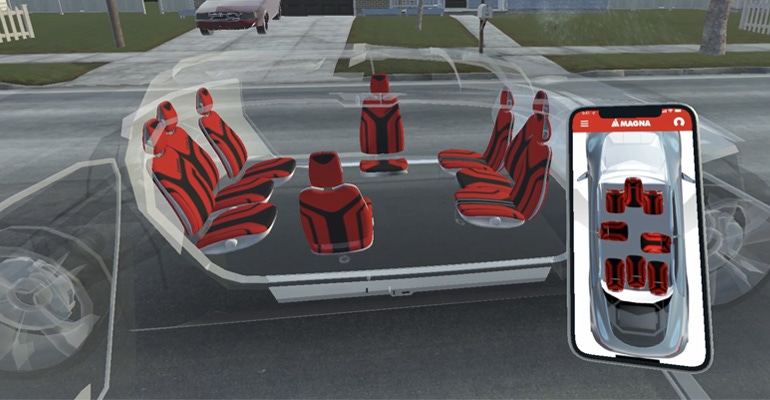Magna Unveils Flexible Interior for Autonomous VehiclesMagna Unveils Flexible Interior for Autonomous Vehicles
The new concept includes three specific configurations for car sharing, long road trips and autonomous ride sharing.
December 11, 2018

ROSEVILLE, MI – Magna, the automotive supplier that introduced the game-changing fold-into-the-floor Stow ‘n Go seating for Chrysler minivans, is at it again. On Monday it showed off a flexible interior design strategy it says will establish it as a mobility technology company rather than a component supplier.
The company’s reconfigurable vision is centered on meeting the opportunities that autonomy and new mobility strategies will create for future passengers.
“The functional basics will remain the same, passengers want convenience, flexibility and comfort,” says Mike Bisson, president-Magna Seating. “This approach helps us create seats that adjust to the consumer, instead of having the consumer adjust to the seats.”
The new concept includes three specific configurations for car sharing, long road trips and autonomous ride sharing. Each configuration has specific features and some ideas are further from production than others. Two of the modes could be in production by 2022, Bisson says.
Magna used consumer research in China, Europe and the U.S. to come up with its ideas for reshaping the vehicle cabin.
Each version has a traditional 3-row seating arrangement, but when necessary, the individual seats move into different positions electrically by following tracks in the vehicle floor and swiveling.
The highlight of the car-sharing version is a cargo mode where the vehicle’s three rows of seats slide to the front of the vehicle on rails and nest under the instrument panel to create a large cargo area in back. The idea is it could be easily shared with others for personal use or small businesses when not being used the owner.
The long-road-trip mode features “campfire seating” where the seats slide and swivel on long rails around the periphery of the interior, so occupants face each other, with three on each side and two seats fore and aft as if they were sitting around a campfire.
The autonomous ride-sharing and campfire seating modes are similar, with variations such as having three rows of seats fore and aft with two facing seats in the middle for a more intimate conference environment. Even so, both these configurations feature electronically insulated personal sound zones where individuals can have private phone conversions without disturbing others.
Some of the configurations, especially sideways-facing passengers, present crash-safety challenges, says Dino Nardicchio, global vice president-Advanced Technology Engineering.
But Nardicchio says Magna is partnering with a major airbag supplier to develop safety systems for these new types of seating configurations.
It’s all aimed at embracing autonomy and new mobility strategies. Building a vehicle now is like building a home, says Magna Chief Technology Officer Swamy Kotagiri.
And, like many suppliers gearing up for autonomy and new mobility, Magna plans to make a big splash where you would not expect to see a traditional automotive component supplier: the giant CES electronics show in Las Vegas.
Read more about:
MagnaYou May Also Like